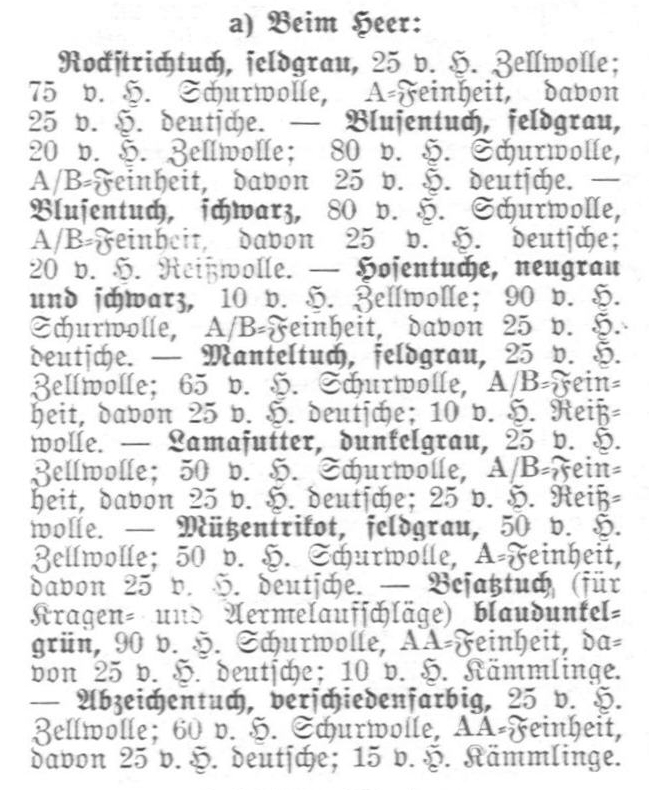These new specifications for German Army uniform fabrics were printed in the trade publication “Uniformen-Markt” on May 1, 1939.

The fabric for the Feldgrau field blouse is specified as 20 percent rayon, 80 percent virgin wool. Trousers were to be made from fabric consisting of 10 percent rayon, 90 percent virgin wool. Overcoat fabric was specified as 25 percent rayon, 65 percent virgin wool and 10 percent recycled wool. All of these fabrics for tunics, trousers and overcoats are specified as “A/B” fineness, which was a measure of the thickness of the yarn used to construct the fabric. The Blaudunkelgrün (“bottle green,” literally “blue dark green”) fabric used for collars and Waffenrock cuffs was a finer fabric, “AA” fineness, 90 percent virgin wool, 10 percent noil (“Kämmlinge,” the short fibers removed during the combing process in spinning yarn). Badge cloth used for insignia was 25 percent rayon, 60 percent virgin wool, 15 percent noil, “AA” fineness.
Having handled uniforms from this era of manufacturing, I never noticed any obvious differences in the fabrics used for tunics, trousers or overcoats. Nor did I notice any apparent difference between badge cloth, and the fine bottle green wool used for collars. I do believe that a forensic type analysis of the fibers would show a difference, which may have given the fabrics different properties.
The specifications for uniform fabric did change over the course of the war, as materials shortages necessitated a reduction in quality of uniform fabrics.